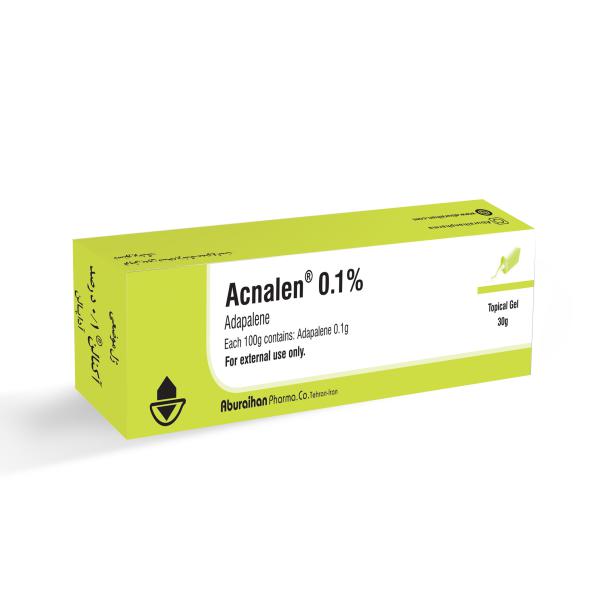Acnalen®
Adapalen
cream and gel
Treatment of acne vulgaris
Mechanism of Action:
Retinoid-like compound which is a modulator of cellular differentiation, keratinization, and inflammatory processes, all of which represent important features in the pathology of acne vulgaris
Method of Administration:
For topical use only; not for oral, ophthalmic, or intravaginal use. Avoid contact with abraded, broken, eczematous, or sunburned skin, mucous membranes, eyes, lips, and angles of the nose. Moisturizers may be used if necessary; avoid alpha hydroxy or glycolic acid-containing products. A mild transitory sensation of warmth or slight stinging may occur shortly after application.
Apply a thin film to clean/dry skin in the evening before bedtime; apply enough to cover entire affected area.
Notes
Hypersensitivity to adapalene or any component of the formulation.
When used for self-medication, do not use on damaged skin (cuts, abrasions, eczema, sunburn).
Interactions:
Methoxsalen (Systemic): Photosensitizing Agents may enhance the photosensitizing effect of Methoxsalen (Systemic). Risk C: Monitor therapy
Multivitamins/Fluoride (with ADE): May enhance the adverse/toxic effect of Retinoic Acid Derivatives. Risk X: Avoid combination
Multivitamins/Minerals (with ADEK, Folate, Iron): May enhance the adverse/toxic effect of Retinoic Acid Derivatives. Risk X: Avoid combination
Multivitamins/Minerals (with AE, No Iron): May enhance the adverse/toxic effect of Retinoic Acid Derivatives. Risk X: Avoid combination
Pregnancy and Lactation:
In general, topical products are recommended for the treatment of acne in pregnancy due to lower systemic exposure. However, because adapalene may share the characteristic of teratogenicity with other retinoids, agents other than adapalene are preferred. Avoid applying large amounts over prolonged periods of time to decrease the potential for systemic absorption.
It is not known if adapalene is present in breast milk. In general, the use of topical agents is preferred over systemic agents for the treatment of acne in females who are breastfeeding.
Warning and Precaution:
- Hypersensitivity reactions: Reactions such as pruritus, face edema, eyelid edema, and swelling have been reported. Discontinue use immediately if allergic or anaphylactoid/anaphylactic reactions occur.
- Photosensitivity: Use is associated with increased susceptibility/sensitivity to UV light; avoid sunlamps or excessive sunlight exposure. Daily sunscreen use and other protective measures are recommended. Patients with sunburn should discontinue use until sunburn has healed.
- Skin irritation: Certain cutaneous signs and symptoms such as erythema, dryness, scaling, stinging/burning, or pruritus may occur during treatment; these are most likely to occur during the first 2 to 4 weeks and will usually lessen with continued use. Treatment can increase skin sensitivity to weather extremes of wind or cold. Concomitant topical medications (eg, medicated or abrasive soaps and cleansers, or cosmetics with a strong drying effect, products with high concentrations of alcohol, astringents, spices or limes) should be avoided due to increased skin irritation. Depending on the severity of irritation, use moisturizer, reduce the frequency of application, or discontinue use.
Adverse Reactions:
>10%: Dermatologic: Xeroderma (≤45%), exfoliation of skin (≤44%), erythema (≤38%), burning sensation of skin (≤29%), stinging of the skin (≤29%)
Storage:
Store below 30ºC and protect from light and moisture.


